Science covers the broad field of knowledge that deals with observed facts and the relationships among those facts. The word science comes from the Latin word scientia, which means knowledge. Scientists study a wide variety of subjects. For example, some scientists search for clues to the origin of the universe. Other researchers examine the structure of molecules in the cells of living plants and animals. Still others investigate why we act the way we do, or try to solve complicated mathematical problems. But in whatever field they work, all scientists explore the workings of the world.

Scientists use systematic methods of study to make observations and collect facts. They then work to develop theories that help them order or unify related facts. Scientific theories consist of general principles or laws that attempt to explain how and why something happens or happened. Science advances as scientists accumulate more detailed facts and gain a better understanding of these fundamental principles and laws.
A theory developed by a scientist cannot be accepted as part of scientific knowledge until it has been verified by the studies of other researchers. In fact, for any knowledge to be truly scientific, it must be repeatedly tested experimentally and found to be true. This characteristic of science sets it apart from other branches of knowledge. For example, the humanities, which include religion, philosophy, and the arts, deal with ideas about human nature and the meaning of life. Such ideas cannot be scientifically proved. There is no test that tells whether a philosophical system is “right.” No one can determine scientifically what feeling an artist tried to express in a painting. Nor can anyone perform an experiment to check for an error in a poem or a symphony.
Science also differs from other types of knowledge in that scientific progress depends on new ideas expanding or replacing old ones. Great works of art produced today do not take the place of masterpieces of the past. But the theories of modern scientists have revised many ideas held by earlier scientists. Repeated observations and experiments lead scientists to update existing theories and to propose new ones. As new discoveries continue to be made, even many recent scientific theories will become outdated and will have to be replaced by better theories that can explain more facts. In this way, scientific knowledge is always growing and improving.
The importance of science
Science has enormous influence on our lives. It provides the basis of much of modern technology—the tools, materials, techniques, and sources of power that make our lives and work easier. The term applied science is sometimes used to refer to scientific research that concentrates on the development of technology. The discoveries of scientists also help shape our views about ourselves and our place in the universe.
To everyday life.
Modern science and technology have changed our lives in many dramatic ways. Airplanes, automobiles, communications satellites, computers, plastics, and television are only a few of the scientific and technological inventions that have transformed human life. Research by nuclear physicists has led to the development of nuclear energy as a source of power. Agricultural output has soared as scientists have developed better varieties of plants and highly effective fertilizers. The development of antibiotics and other new drugs has helped control many infectious diseases. Studies in anatomy and physiology have led to amazing new surgical techniques and to the invention of lifesaving machines that can do the work of such organs as the lungs, kidneys, and heart.

Although scientific and technological achievements have benefited us in numerous ways, they have also created serious problems. The rapid growth of industrial technology, for instance, has resulted in such grave side effects as environmental pollution and fuel shortages. Breakthroughs in nuclear research have led to the development of weapons of mass destruction. Some people fear that advanced biological research will produce new disease-causing bacteria or viruses that resist drugs. People are also concerned that computerized information systems may destroy personal privacy.
The harmful effects of some technological applications of science have led some people to question the value of scientific research. But science itself is neither good nor bad. The uses that businesses, governments, and individuals choose to make of scientific knowledge determine whether that knowledge will help or harm society. For a more detailed discussion of the benefits and side effects of technology, see Technology .
To philosophical thought.
Science has greatly affected the way we view ourselves and the world around us. In ancient times, most people believed that natural events and everything that happened to them resulted from the actions of gods and spirits. For example, they thought that angry gods and evil spirits caused disease by invading or attacking the body.
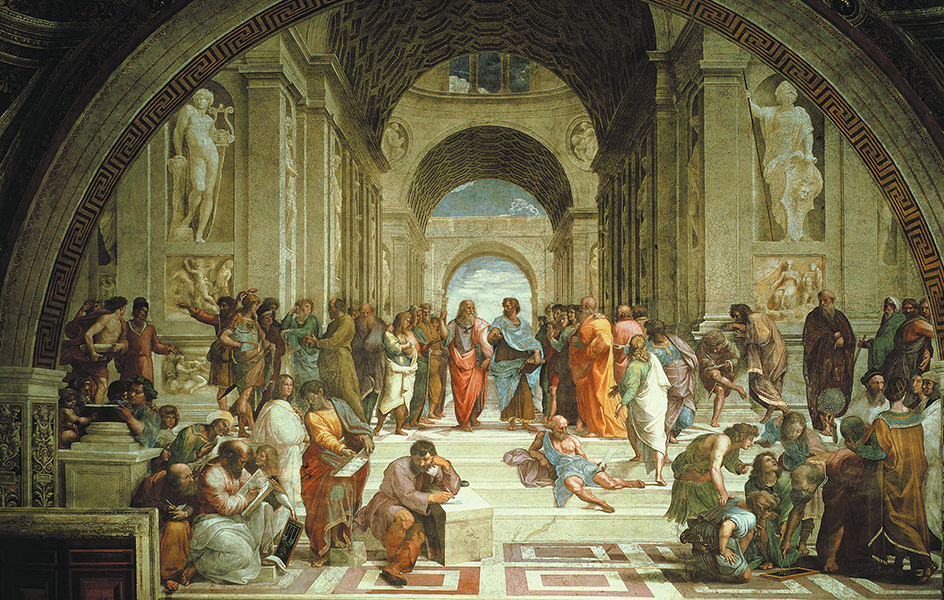

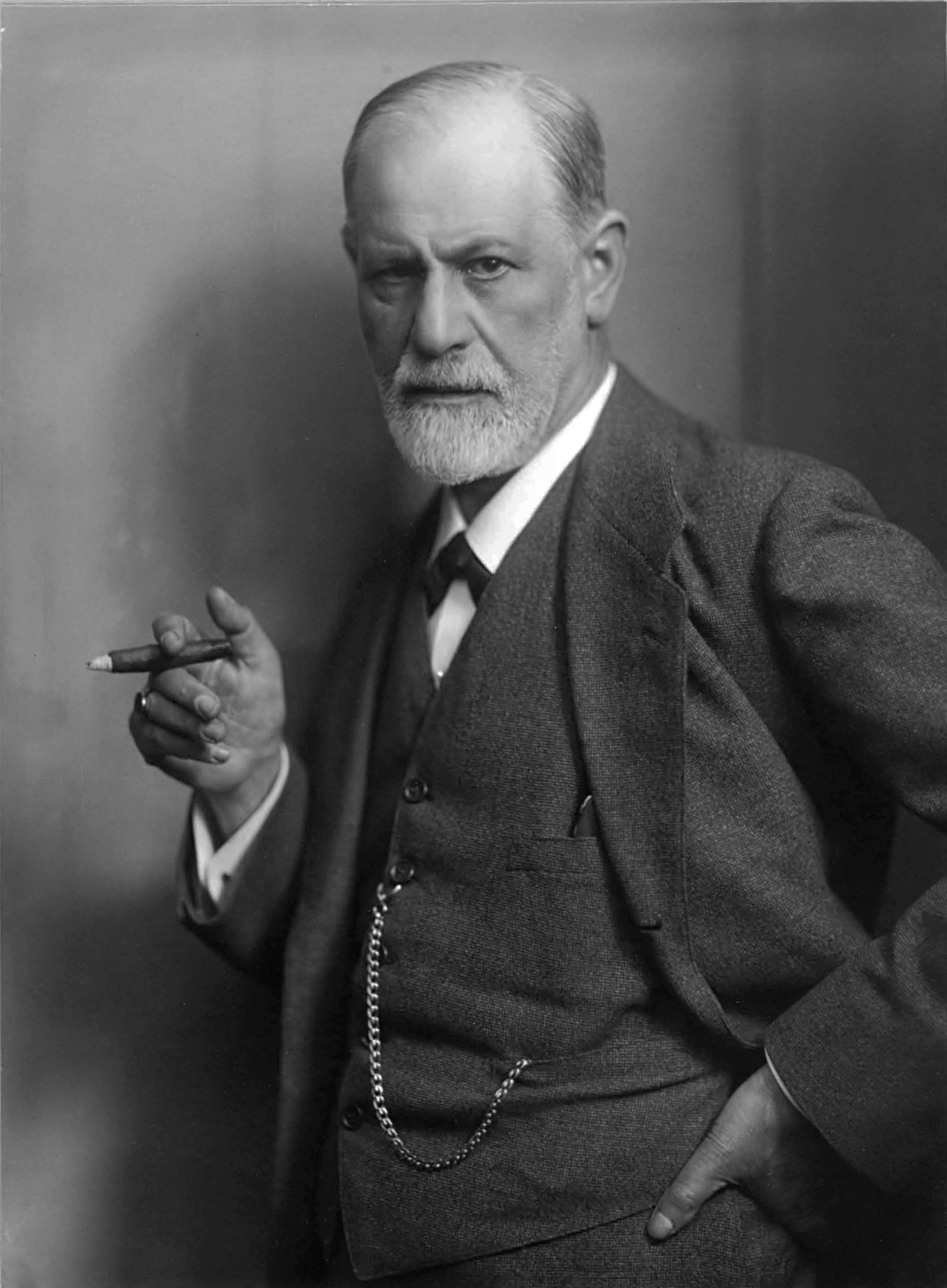
The ancient Greeks were among the first peoples to begin to use systematic observation and reasoning to analyze natural happenings. As scientific thinking gradually developed, nature came to be seen less and less as the product of mysterious spiritual forces. Instead, people began to feel that nature could be understood and even controlled through science.
Over the years, scientific findings have increasingly influenced philosophical and religious thought about the nature of human beings and their place in the universe. In the mid-1500’s, for example, the Polish astronomer Nicolaus Copernicus proposed that Earth and the other planets travel around the sun. Although his theory was later proved to be correct, it stirred strong opposition among philosophers and religious leaders of the time. They had long believed that Earth and the people on it had special importance because the sun, stars, and planets seemed to revolve around Earth.
The theories developed by the British naturalist Charles Darwin in the mid-1800’s also aroused bitter philosophical and religious debates. Some philosophers and religious leaders opposed Darwin’s idea that all species of plant and animal life evolved (developed gradually) from a few common ancestors. They felt that this theory of evolution contradicted the belief that God created human beings and gave them special emotional and intellectual gifts. These debates continue today. During the late 1800’s and early 1900’s, the Austrian physician Sigmund Freud developed a theory that unconscious motives control much of human behavior. His research and writings have raised serious questions about the extent to which people have free will and are responsible for their behavior. See Evolution (Acceptance of evolution) ; Freud, Sigmund (His influence) .
Since 1900, new scientific theories have begun to alter philosophical views about the nature of reality and the limits of our ability to observe it accurately. In 1905, for instance, the German-born physicist Albert Einstein published his special theory of relativity. The theory dramatically changed some of the most basic ideas about time, space, mass, and motion. For example, it stated that observations of space and time are not absolute. They are affected by the motion of the observer. See Relativity .
The branches of science
Scientific study can be divided into four major groups: (1) mathematics and logic, (2) the physical sciences, (3) the life sciences, and (4) the social sciences. Within these main categories are many smaller groupings of closely related specialties. For example, anthropology, psychology, and sociology are behavioral sciences included in the category of the social sciences. Geology, meteorology, physical geography, and physical oceanography are grouped together as the earth sciences within the category of the physical sciences.
As scientific knowledge has grown and become increasingly complicated, many new fields of study have emerged. At the same time, the boundaries between scientific fields have become less and less clear-cut. Numerous areas of science overlap, and it is often hard to tell where one science ends and another begins. For instance, both chemistry and physics deal with atomic structure. Both paleontology and geology study the age of rocks on Earth. Many of the most important scientific advances have resulted from the exchange of ideas and methods among different branches of science.
In some cases, sciences have come to overlap so much that interdisciplinary fields have been established. Such fields combine parts of two or more sciences. For example, biochemistry combines areas of biology and chemistry in studying the chemical processes that occur in living plants and animals. Economic geology draws upon economics and geology in investigating the distribution of such natural resources as gold, silver, and petroleum.
World Book has separate articles on many of the branches of science discussed in this section. For a complete listing of these articles, see the Related articles at the end of this article.
Mathematics and logic
are not based on experimental testing. But they can be considered part of science because they are essential tools in almost all scientific study. Mathematics enables scientists to prepare exact statements of their findings and theories and to make numerical predictions about what will happen in the future. Logic provides the basis for all scientific reasoning.
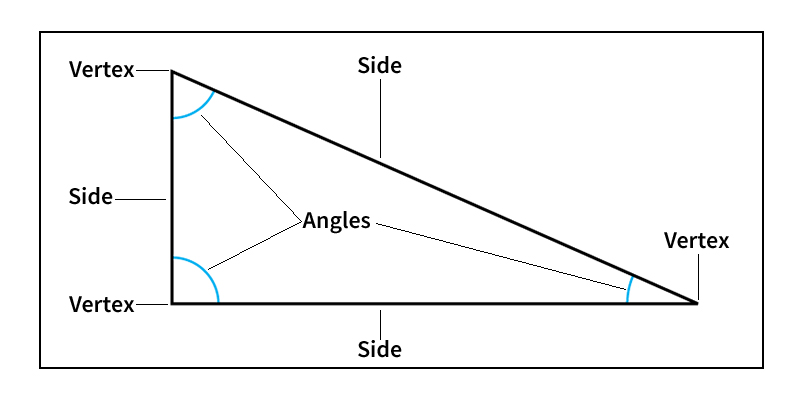
Scientific reasoning depends on both deductive logic and inductive logic. In using deductive logic, a scientist reasons from known scientific principles or rules to draw a conclusion relating to a specific question. The accuracy of the scientist’s conclusion depends on the accuracy and completeness of the principles or rules used. Inductive logic requires a scientist to make repeated observations of an experiment or an event. From the many observations, the scientist can form a general conclusion. See Deductive method ; Inductive method .
The physical sciences
examine the nature of the universe. They study the structure and properties of nonliving matter, from tiny atoms to vast galaxies. The physical sciences include (1) astronomy, (2) chemistry, (3) geology, (4) meteorology, and (5) physics.
Astronomy
is the study of comets, meteors, galaxies, planets, stars, and other objects in space. Astronomers map the locations of heavenly bodies and investigate the physical and chemical processes that occur in celestial objects. They also study the structure, composition, size, and history of the universe.
Chemistry
studies natural and artificial substances to determine their composition and structure and the changes that occur when they combine and form other substances. Chemists take molecules apart and put them together in new ways. They try to find out why chemical reactions occur and how they can be controlled. Organic chemistry deals with most compounds containing the element carbon, and inorganic chemistry concerns all other compounds. Radiochemistry investigates radioactive substances and their uses. Stereochemistry examines the different chemical properties that result when compounds of the same formula differ in the relative position of their atoms in three-dimensional space. Physical chemistry studies the effects of light, heat, and other forms of energy on chemical processes.
Geology
investigates the composition, structure, and history of Earth. Geologists analyze how such forces as earthquakes, volcanic eruptions, and wind or water erosion change Earth’s surface. They also study meteorites and materials brought back from the moon. Branches of geology include petrology, the study of rocks; mineralogy, the study of minerals; and seismology, the study of earthquakes. Geochronology seeks to determine the age and history of Earth and its parts.
Meteorology
is the study of Earth’s atmosphere and the conditions that produce weather. Meteorologists try to predict the weather. They work to develop improved instruments for collecting data about the atmosphere. They also seek better techniques to make weather forecasting more exact. Climatologists analyze weather trends to determine the general pattern of weather that makes up an area’s climate.
Physics
is concerned with matter and energy. Physicists study mechanics, heat, light, sound, electricity, magnetism, and the properties of matter. Atomic physics involves the study of the structure and properties of atoms, and nuclear physics focuses on the makeup and behavior of the nuclei of atoms. Particle physics deals with the nature of electrons, protons, and other tiny bits of matter smaller than atomic nuclei. Cryogenics examines the behavior of matter at extremely low temperatures, and plasma physics investigates the behavior of gases that ionize to create a form of matter called plasma. Solid-state physics studies the properties of extremely pure crystals and other solid materials.
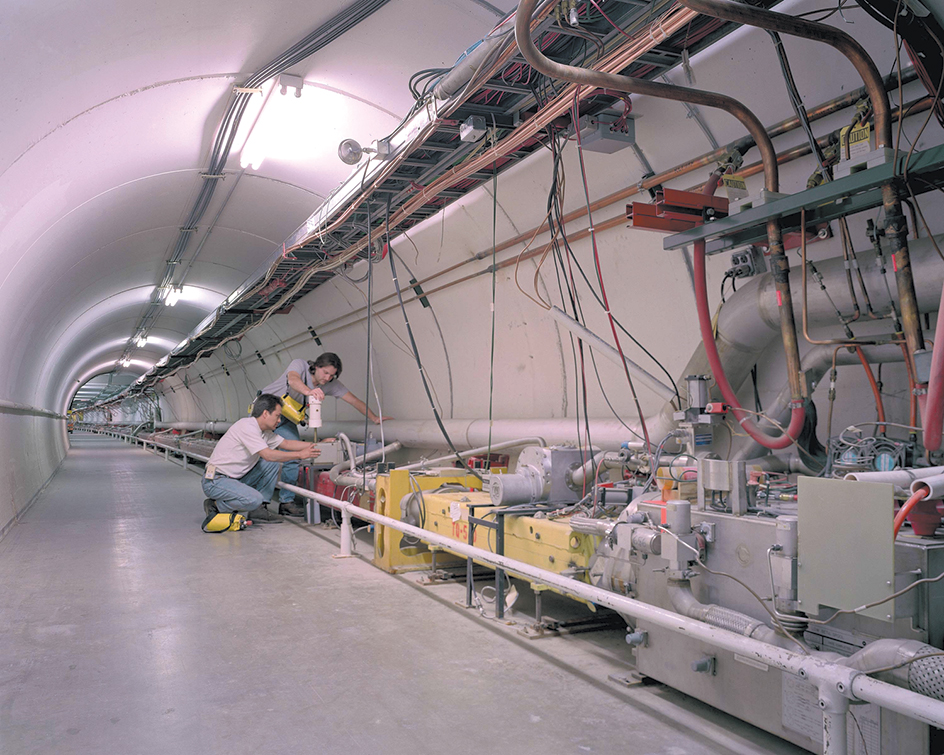
The life sciences,
also called the biological sciences or biology, involve the study of living organisms. There are two main fields of the life sciences. Botany deals with plants, and zoology with animals. Botany and zoology are further divided into various branches, each of which can be subdivided into areas of special study. Most major branches of the life sciences apply equally to plants and animals. Many of the branches, such as anatomy and physiology, overlap with, and contribute greatly to, the study of medicine. See Medicine .
Anatomy
examines the structure of living things. Anatomists investigate the parts of organisms and how the parts are related. Histology deals with tissues, and cytology with the fine structures of individual cells. Comparative anatomy studies similarities and differences in the body structure of animals and provides clues to how certain animals might have evolved.
Physiology
deals with the normal functions of living things and their parts. For example, physiologists study how nerve fibers transmit impulses and how organisms take in and use food. Biochemistry examines the chemical processes that are involved in the actions of the different parts of plants and animals. Biophysics investigates the physical processes involved in the functioning of the various parts of living things.
Other branches.
The field of genetics is concerned with how plants and animals pass on characteristics to their offspring. Molecular biology examines the structure and function of proteins and other large molecules essential to life. Paleontology investigates the forms of life that existed in prehistoric times. Taxonomy involves the classification of living things. Sociobiology deals with the biological basis for the social behavior of people and other animals. Ecology focuses on the relationships living things have to one another and to their environment.
Some life sciences concentrate on certain kinds of organisms. For example, bacteriology is the study of bacteria, and ornithology is the study of birds. Some other life sciences investigate the organisms that live in a specific environment. Marine biology, for instance, studies the plants and animals of the sea.
The social sciences
deal with the individuals, groups, and institutions that make up human society. They focus on human relationships and the interactions between individuals and their families, religious or ethnic communities, cities, governments, and other social groups. Social scientists attempt to develop general “laws” of human behavior. But their task is difficult because it is hard to design controlled experiments involving human beings. Social scientists must therefore rely heavily on careful observations and the systematic collection of data to arrive at their conclusions. The use of statistics and mathematical models is important in analyzing information and developing theories in the social sciences. The main branches of the social sciences include (1) anthropology, (2) economics, (3) political science, (4) psychology, and (5) sociology.
Anthropology
investigates the origin and development of human cultures and of human physical characteristics. Anthropologists study various groups of people to determine their similarities and differences. They compare the arts, beliefs, customs, daily life, inventions, languages, social relationships, and values of different cultures. Archaeology traces cultural development by studying the things earlier peoples made and used.
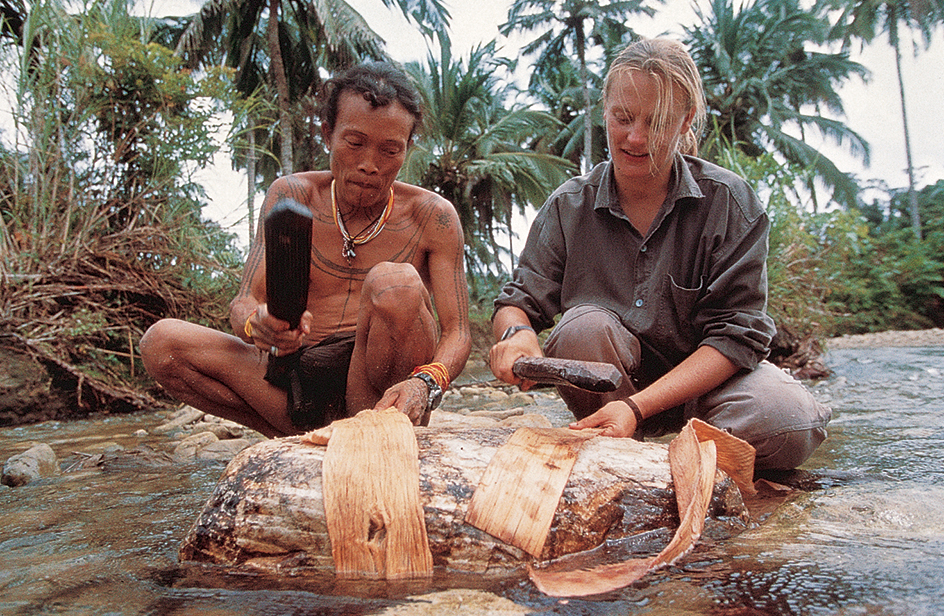
Economics
examines how people produce goods and services, how they distribute them among themselves, and how they use them. Economists deal with problems in such areas as management and labor relations, the setting of wages and prices, and the use of natural resources. They use computers and statistical analysis to construct mathematical models that enable them to determine how various economic systems work and to predict the effect of changes in the systems.
Political science
studies forms of government, political parties, pressure groups, elections, and other aspects of politics. Political scientists try to develop theories about political power and behavior and seek to discover what kinds of government may benefit people the most under given circumstances. They also measure public opinion.
Psychology
involves investigation of mental processes and behavior. Physiological psychologists study how the nerves and the brain work. Behavioral psychologists observe and record the ways in which people and other animals relate to one another and to the environment. They use systematic methods to examine people’s thoughts, feelings, and personality traits. Psychologists also explore the causes of mental disorders and possible methods of treatment.
Sociology
studies the nature, origin, and development of human society and community life. Sociologists investigate the interrelationships among individuals and groups in a society. They examine cultural influences, standards of behavior, and other factors that can affect general social conditions. They also explore the causes of crime, divorce, poverty, and other social problems.
How scientists work
Scientific research is a creative process that can involve a variety of techniques. Important advances may result from patient hard work or sudden leaps of imagination. Even chance can play a role in the scientific process. For example, Sir Alexander Fleming, a British bacteriologist, discovered penicillin accidentally in 1928, when he noticed that a bit of mold of the genus Penicillium had contaminated a laboratory dish containing bacteria. Examining the dish, Fleming saw that the bacteria around the mold had been killed.
Scientists use a number of methods in making discoveries and in developing theories. These methods include (1) observing nature, (2) classifying data, (3) using logic, (4) conducting experiments, (5) forming a hypothesis (proposed explanation), (6) expressing findings mathematically, and (7) modeling with computers. Most scientific research involves some or all of these steps.
Observing nature
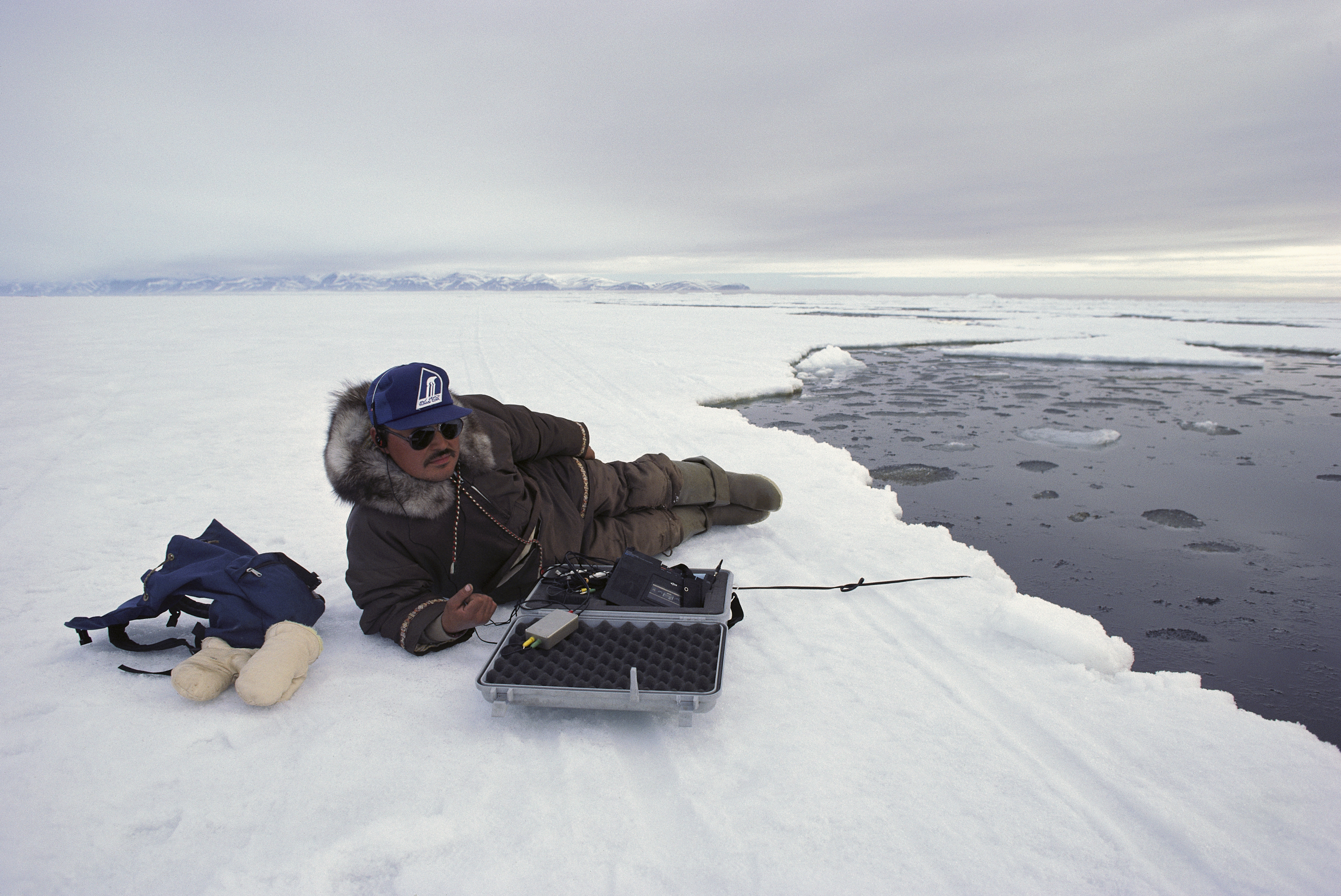
is one of the oldest scientific methods. For example, the ancient Egyptians and Babylonians studied the motions of heavenly bodies and so learned to predict the changes of seasons and the best times to plant and harvest crops. In the 1830’s, Charles Darwin carefully observed plants and animals in many parts of the world while serving as a naturalist with a British scientific expedition aboard the H.M.S. Beagle. Study of the specimens collected on the voyage helped Darwin develop his theory that modern species had evolved from a few earlier ones.
Classifying data
can reveal the relationships among observed facts. In the mid-1800’s, Dmitri Mendeleev, a Russian chemist, classified the elements into families or groups in a chart called the periodic table. On the table, elements with similar properties appeared at regular intervals. Gaps in the table indicated elements that were not yet known. Scientists later proved the importance of Mendeleev’s systematic classification when they discovered the existence and chemical properties of new elements that filled the gaps.
Using logic
enables scientists to draw conclusions from existing information. In the late 1800’s, a German physicist named Wilhelm Wien studied the relationship between temperature and the energy radiated by heated solids and liquids. After studying many specific examples, he noted that multiplying the temperature of a heated solid or liquid by the wavelength of greatest intensity radiated at that temperature always produced the same number. Although Wien could not test all solids and liquids, he used inductive reasoning to conclude that this number was a universal constant which was the same for all heated solids and liquids, regardless of their physical or chemical makeup.
Conducting experiments
is one of the most important tools in developing and testing scientific theories. The Italian astronomer and physicist Galileo was one of the first scientists to recognize that systematic experimentation could help reveal the laws of nature. During the late 1500’s, Galileo began performing carefully designed experiments to study the basic properties of matter in motion. By rolling balls of different weights down inclined planes, Galileo discovered that all objects fall to the ground with the same acceleration (rate of increase in speed), unless air resistance or some other force slows them down.
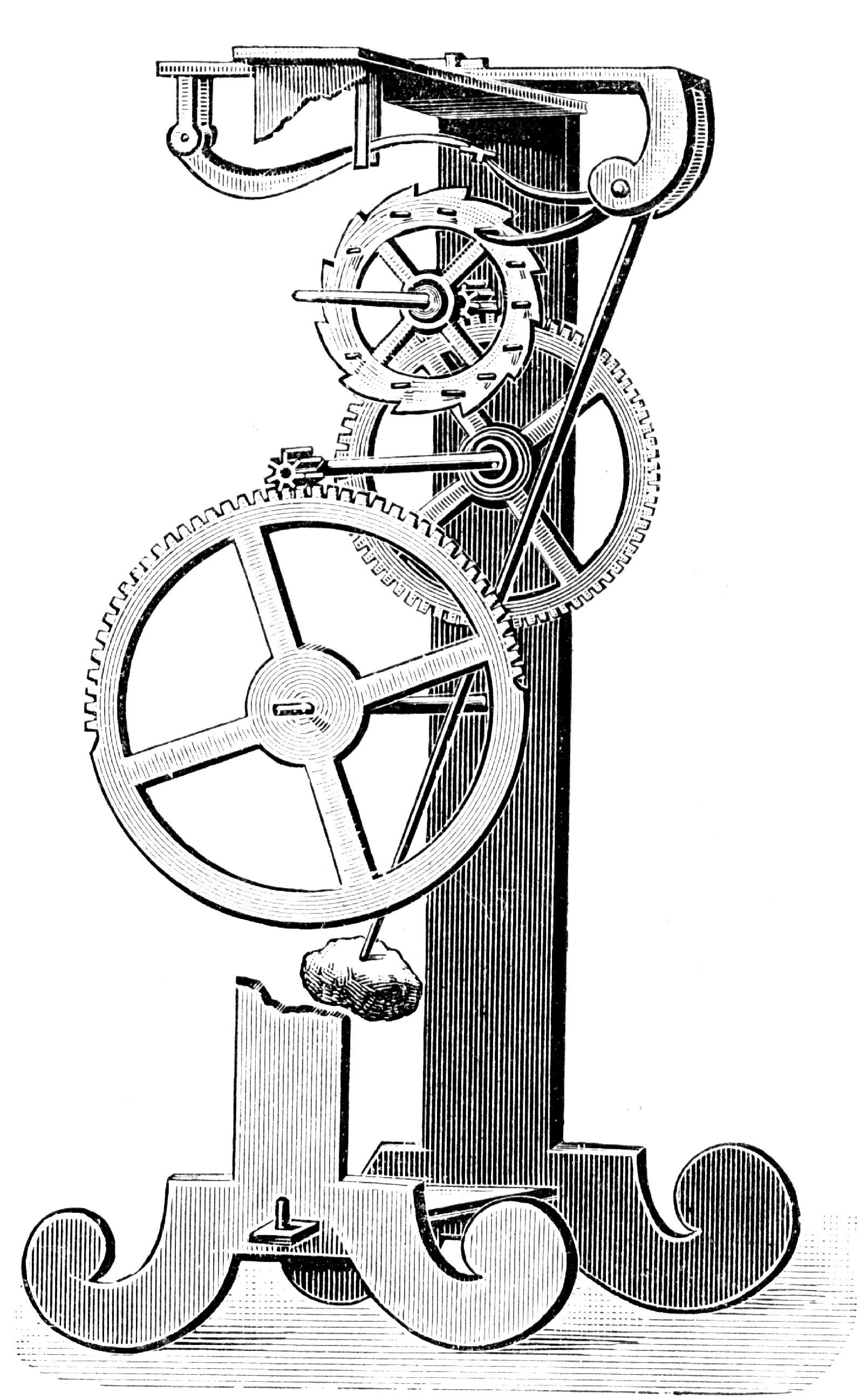
In the early 1600’s, William Harvey, an English physician, used the experimental method to learn how blood circulates through the body. He made careful studies of the human pulsebeat and heartbeat and dissected (cut up) human and animal corpses for examination. Harvey concluded that the heart pumps blood through the arteries to all parts of the body and that the blood returns to the heart through the veins.
Forming a hypothesis
requires talent, skill, and creativity. Scientists base their proposed explanations on existing information. They strive to form hypotheses that help explain, order, or unify related facts. They then use experimentation and other means to test their hypotheses.
The discovery of the planet Neptune in the mid-1800’s resulted from the formation of a hypothesis. Astronomers noticed that Uranus, which they thought was the most distant planet, was not always in the position predicted for it by the laws of gravitation and motion. Some astronomers concluded that the laws did not hold at such great distances from the sun. But other astronomers hypothesized that the force of gravity from an unknown planet might cause the variations in the orbit of Uranus. By calculating where such a planet would have to be located to affect the orbit, astronomers eventually discovered Neptune.
Expressing findings mathematically
can yield valuable insights about how the world works. Galileo used mathematics to express the results of his experiments with falling bodies and to enable him to determine the distance an object would fall in a certain amount of time. The English scientist Sir Isaac Newton developed a mathematical theory of gravitation in the 1600’s that explained many types of motion, both on Earth and throughout the universe. In the early 1900’s, the German-born physicist Albert Einstein found that mass is related to energy by the mathematical equation E = mc-squared (E=mc 2). The equation states that energy (E) is equivalent to mass (m) multiplied by the speed of light squared (c-squared). This equation later provided the basis for the development of nuclear energy.
Modeling with computers
helps scientists quickly analyze large amounts of data. A model is a set of mathematical equations that describes relationships between data. In the past, scientists computed these equations on paper or with a calculator. Many models were too difficult or time-consuming to attempt. But the development of highly powerful computers in the late 1970’s enabled scientists to formulate complex models at great speeds.

Using computer models, scientists can easily vary data to test scientific hypotheses. This use of a model is known as simulation. Scientists commonly simulate experiments that would be impossible to carry out in a laboratory. For example, meteorologists simulate the development of thunderstorms to test how changes in atmospheric pressure affect cloud movement. An engineer may simulate an airplane’s flight to find ways of improving its design. Simulations are also used to predict voting results, population growth, and stock market prices.
How scientists communicate
Scientific knowledge spreads quickly when people exchange new ideas. Scientists can improve their hypotheses based on the advice of other experts, and unique hypotheses can stimulate further research and discovery.
Science networks.
Scientists depend on informal and formal networks to communicate their ideas. They may informally talk about their experiments with other scientists, who in turn pass on the information. Informal newsletters, computer networks, electronic journals, fax machines, and even the telephone help scientists spread the latest news.
Scientists may also use teaching as an informal way to exchange ideas. For example, university professors can try out hypotheses on experienced students. Scientists often teach their theories to a wide audience through newspapers, magazines, and radio and TV programs.
Science publications.
Special magazines known as scientific journals enable scientists to announce formally the results of their work. Most scientific journals carry technical articles concerning research in one particular field. They are circulated to individuals working in that field. Journal editors receive many articles reporting discoveries, and they select for publication only those that reflect careful research. Some editors send articles to a peer review board of experts who help decide if articles should be published.
Scientists also rely on reference publications known as indexes, abstracts, and digests. Indexes list the vast number of scientific books and articles published each year. Abstracts and digests contain summaries of such material. Indexes, abstracts, and digests are available in printed form—either through mailings to subscribers or through library reference departments—and in computer databases.
Scientific gatherings
provide scientists with a formal place to discuss the latest discoveries and to meet other experts in their field. Scientists participate in gatherings of local clubs, national meetings, and international conventions. They also share information as they work together at research institutes, which are set up by professional societies, businesses, and governments. Some countries jointly sponsor research institutes as a way of sharing the cost of expensive laboratory equipment. Scientists come from around the world to work and study at these laboratories. See CERN ; Institute for Advanced Study ; National Institutes of Health .
The history of science
From earliest times, people have been curious about the world around them. Thousands of years before civilization began, people learned to count and tried to explain the rising and setting of the sun and the phases of the moon. They studied the habits of the animals they hunted, learned that some plants could be used as drugs, and acquired other basic knowledge about nature. These achievements marked the beginnings of science. They were among the first attempts to understand and control nature. In general, mathematics and medicine were the first sciences to develop, followed by the physical sciences, life sciences, and social sciences.
Early civilizations.
The sciences developed by the peoples of the first civilizations dealt chiefly with practical matters. For example, mathematics was used for basic business and government transactions. Astronomy provided the basis for keeping time and determining when to plant and harvest crops. As early as 3000 B.C., the Egyptians studied the heavens to forecast the arrival of the seasons and to predict when the annual flooding of the Nile River would occur. The Egyptians used geometry to establish property lines and to make the measurements needed to build huge pyramids. They also learned some anatomy, physiology, and surgery through embalming their dead.

In ancient Babylonia, the people used a system of counting in units of 60, which is the basis of the 360-degree circle and the 60-minute hour. They understood fractions, squares, and square roots. They also developed complicated mathematical models of the motions of the planets and other heavenly bodies. Their detailed observations of the sky enabled them to predict solar and lunar eclipses and other astronomical events.
The Chinese and Indian civilizations developed a little later than the Egyptian and Babylonian cultures. By the 300’s B.C., the Chinese had mapped the major stars in the heavens and, like the Babylonians, succeeded in predicting eclipses. The ancient Chinese had their own system of mathematics. They also developed acupuncture and other medical practices that have been handed down almost unchanged to the present. Medicine in ancient India dealt with the prevention as well as the treatment of illness. Indian surgeons performed many kinds of operations, including amputations and plastic surgery. Early Indian mathematicians invented the Hindu-Arabic numerals that we use today.
The earliest advanced cultures in the Americas also had a working knowledge of astronomy and mathematics. One of the first major civilizations was that of the Olmec Indians of Mexico, who developed a counting system and a calendar between 1200 and 100 B.C. By about A.D. 250, the Maya of Central America and Mexico were studying the motions of the sun, moon, stars, and planets from observatories. They used their astronomical knowledge to develop religious and civil calendars. The Maya also had an advanced mathematical system. During the 1400’s, the Aztec Indians of Mexico and the Inca Indians of Peru ruled powerful empires. Carvings on a famous “Sun Stone” left behind by the Aztec represent the regular motions of the heavenly bodies, as well as religious symbols and symbols for the days of the month. The Inca used mathematics in constructing buildings and roads.
Ancient Greece.
The Greeks left the greatest scientific heritage of all the ancient peoples. The Greeks stressed the development of general theories about the workings of the world. The Greeks were the first to begin a systematic separation of scientific ideas from superstition.
About 400 B.C., a Greek physician named Hippocrates taught that diseases have natural causes and that the body can repair itself. He was the first physician known to consider medicine as a science apart from religion. During the 300’s B.C., Aristotle, one of the greatest Greek philosophers, studied many areas of science. Aristotle gathered vast amounts of information about the variety, structure, and behavior of animals and plants. He showed the need for classifying knowledge and recognized the importance of observation. He also developed deductive logic as a means of reaching conclusions.
Greek mathematics was more advanced than that of any other ancient culture. The Greeks became the first people to separate mathematics from purely practical uses and to develop systematic methods of reasoning to prove the truth of mathematical statements. By 300 B.C., Thales, Pythagoras, Euclid, and other Greek mathematicians had perfected geometry as a single logical system. The Greeks believed that the study of mathematics could yield absolutely certain and eternal knowledge. For example, once a principle of geometry was proved, it remained true for all time.
Some Greek scientists had an interest in practical affairs. During the 200’s B.C., for instance, the Greek mathematician and inventor Archimedes invented the compound pulley. The pulley made possible the construction of machines that could easily move heavy loads.
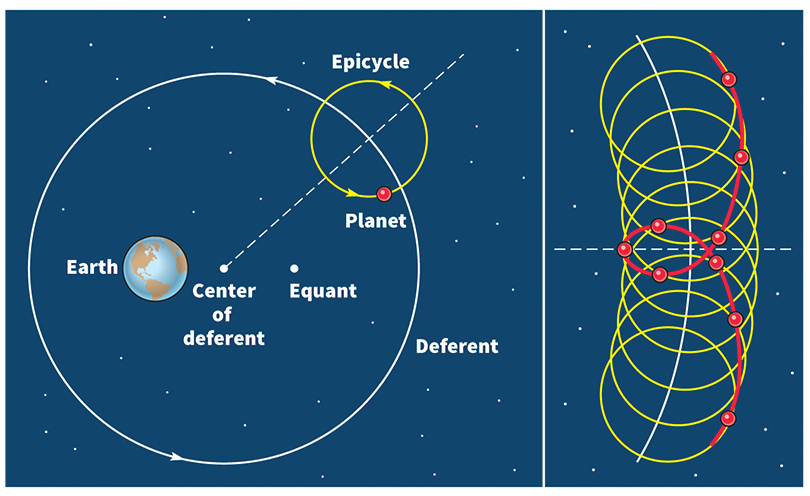
Although the ancient Greeks made many important scientific advances, their approach to science had limitations. Believing mathematics to be eternally true, unchanging knowledge, the Greeks never saw that it could be used to analyze the physics of motion and other constantly changing properties of nature. Nor did the Greeks discover the importance of testing their observations systematically. Many of their conclusions were false because they were founded on “common sense” instead of experiments. For example, Aristotle mistakenly thought, on the basis of common sense, that heavier objects fall to Earth faster than lighter ones.
Ancient Rome.
By the A.D. 100’s, the city of Rome had conquered much of the known world, including the areas of Greek civilization. The Romans were excellent architects, engineers, and builders. But they contributed little to theoretical science. Under Roman rule, scholars continued to accept the scientific knowledge of the Greeks. Many Roman physicians came from the Greek-speaking world, and the Romans employed Greek tutors or sent their children to Athens and other centers of Greek learning for advanced education.
Although the Romans themselves made few scientific discoveries, vast encyclopedias of scientific knowledge were written under Roman rule. In a 37-volume work called Natural History, the Roman author Pliny the Elder gathered the scientific learning of his day. A Greek geographer and historian named Strabo described all parts of the known world in his 17-volume Geography.
The Greek physician Galen, who practiced medicine in Rome during the A.D. 100’s, developed the first medical theories based on scientific experiments. Galen dissected animal corpses for study and greatly advanced the knowledge of anatomy. However, he had many false notions about how the human body works.
The Middle Ages
was a 1,000-year period in European history that began in the A.D. 400’s. For hundreds of years after this period began, little scientific investigation took place in Europe. Most scholars were more interested in theology, the study of God, than in the study of nature. They relied on Greek and Roman writings for scientific information and saw no need to make observations of their own. Aristotle, Euclid, Galen, and Ptolemy were considered the authorities on science. But many of the ancient works used by European scholars of the Middle Ages were poorly preserved. Errors were introduced as copies were made, and the contents of the works were often inaccurately summarized.
Meanwhile, Arabs in the Middle East preserved much of the science of ancient Greece and Rome. They carefully translated many Greek and Roman texts into Arabic. Through their conquests, they came into contact with Persian astronomy, history, and medicine and with the Indian system of numbers and decimal numeral system.

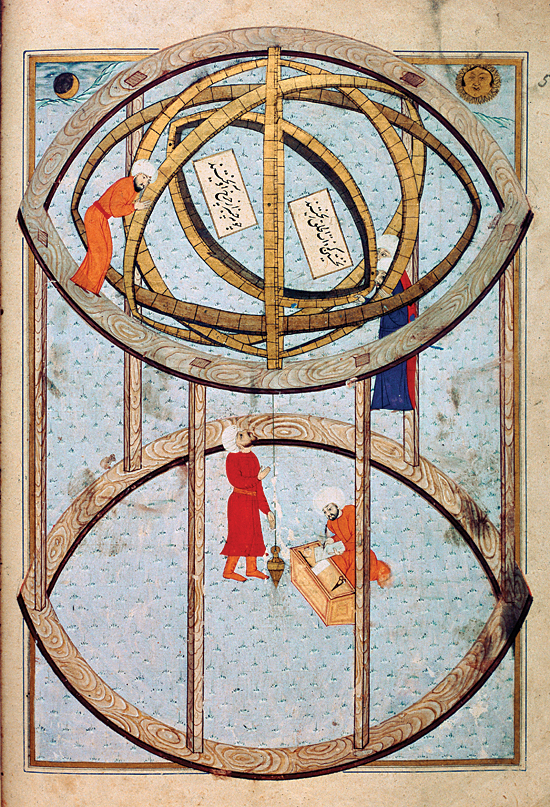
Arabic scientists also made important contributions of their own in astronomy, mathematics, medicine, optics, and other sciences. An Arab mathematician named al-Khwarizmi organized and expanded algebra in the early 800’s. Avicenna, a Muslim physician of the late 900’s and early 1000’s, produced a vast medical encyclopedia titled the Canon of Medicine. It summed up the medical knowledge of the day and accurately described meningitis, tetanus, and many other diseases. During the early 1000’s, the Arab physicist Ibn al-Haytham, also known as Alhazen, recognized that vision is caused by the reflection of light from objects into our eyes. In spite of their many scientific achievements, the Arabs did not use experimental methods or develop the instruments or applied mathematical techniques that were necessary to the development of modern science.
During the 1000’s, European scholars began to show a renewed interest in science. Many major Arabic scientific works were introduced into Europe and translated into Latin, the language of learning in the West. The Hindu-Arabic number system also spread to Europe, where it stimulated the development of mathematics and began to be used in business. Some theologians of the 1100’s and 1200’s, such as Peter Abelard of France and Thomas Aquinas of Italy, started systematic efforts to bring Christian teachings into harmony with rediscovered scientific ideas. During the 1100’s, the first European universities were established. In time, universities were to play a vital role in the growth of science.
Relatively few medical advances occurred in Europe during the Middle Ages. Physicians relied on the teachings of Galen, rather than make new discoveries based on their own observations and studies. Epidemics frequently swept across Europe. In the 1300’s, for example, a terrible epidemic of plague, now known as the Black Death, killed from one-fourth to one-half of Europe’s population. To treat or prevent diseases, many people continued to depend on magic and superstition.
The rebirth of science
in Europe began in 1543 with the publication of two books that broke scientific tradition. One book was written by the Polish astronomer Nicolaus Copernicus, and the second by Andreas Vesalius, an anatomist born in what is now Belgium.
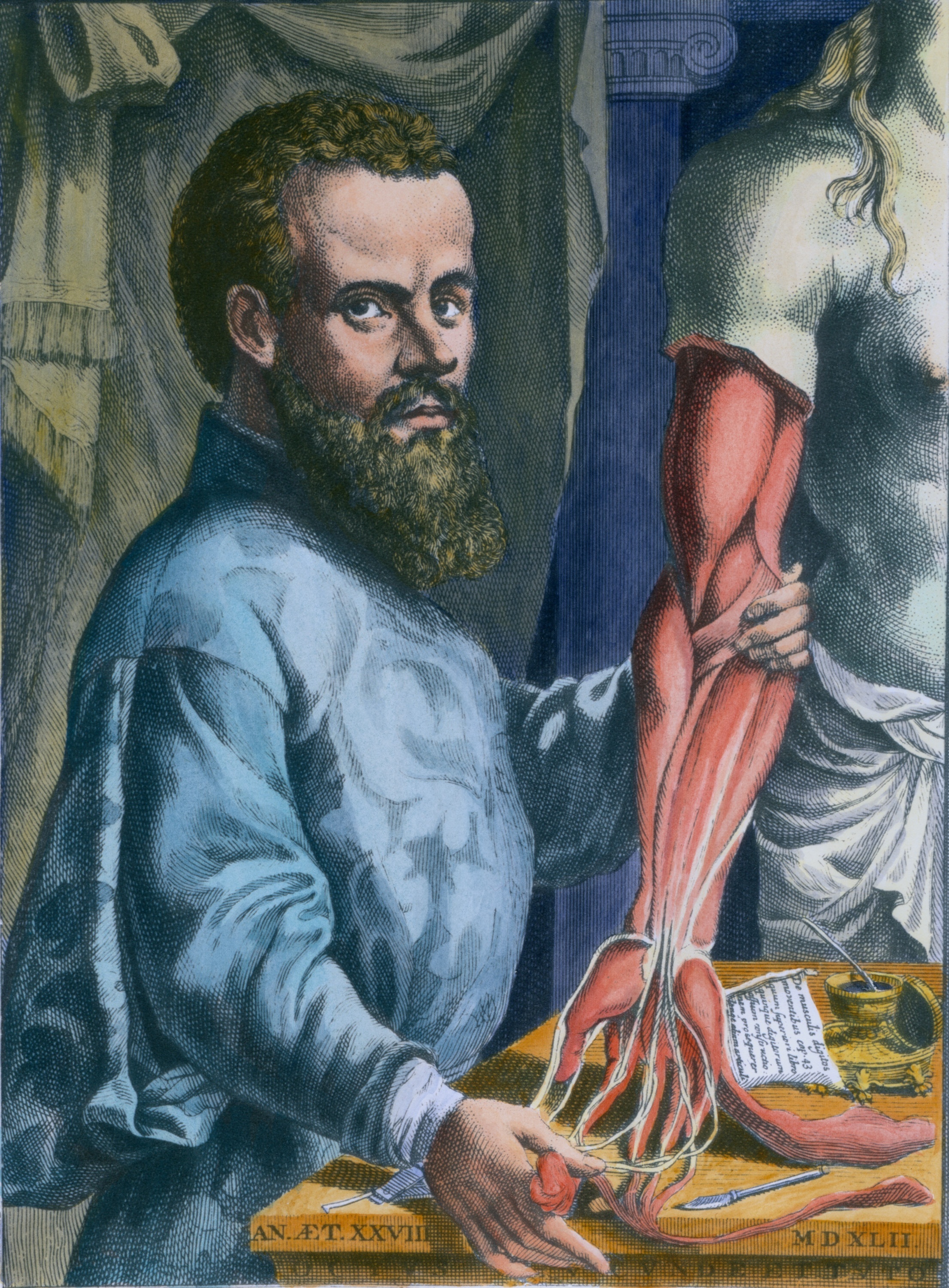
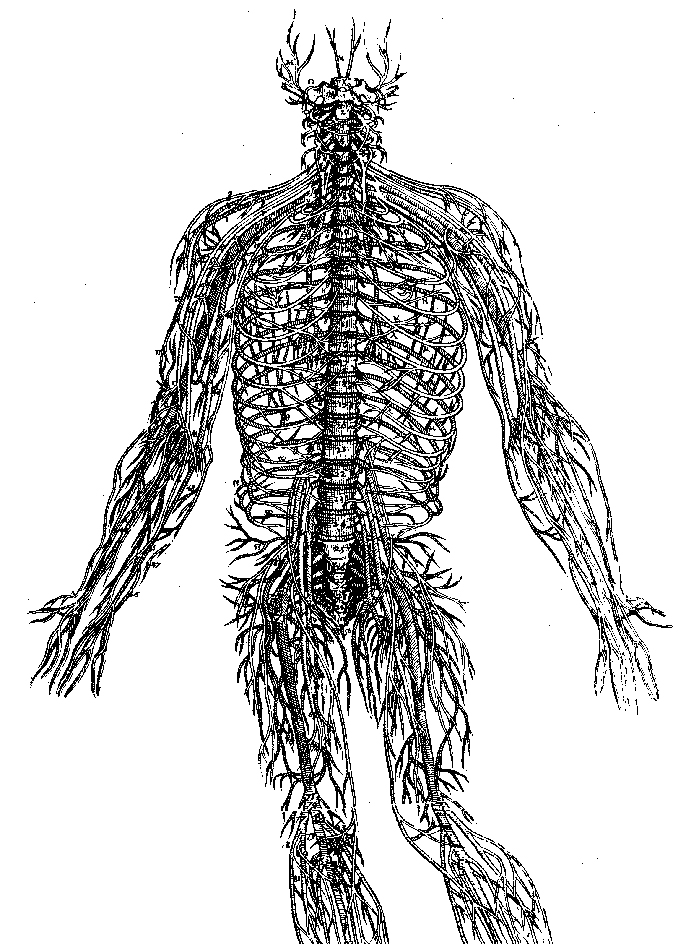
Copernicus’s book, called On the Revolutions of the Heavenly Spheres, challenged Ptolemy’s view that Earth was the center of the universe. Ptolemy’s geocentric theory required a complicated series of circular motions to account for astronomers’ observations of how the planets appeared to move. Copernicus realized that if Earth and other planets traveled around the sun, he could explain the observed motions of the planets without some of the elements of Ptolemy’s system. But Copernicus’s heliocentric (sun-centered) theory still did not accurately predict the motions of all the planets.
During the 1500’s, a Danish astronomer named Tycho Brahe observed the motions of the planets far more precisely than they had ever been observed before. Tycho’s work enabled Johannes Kepler, a German astronomer and mathematician, to lend new support to the heliocentric theory in 1609. Kepler used intricate calculations to show that the theory could explain the movements of the planets if the planets orbited the sun in elliptical (oval) paths rather than circular ones. The elliptical shape of the orbits would also make it easier to account for the movements of the planets. Kepler’s work marked the start of modern astronomy.
The second tradition-breaking book published in 1543 was Vesalius’ On the Structure of the Human Body. In this work, Vesalius laid out in detail the most precise anatomical knowledge of the day. He based the book on observations he made in dissecting human corpses. His book gradually replaced those of Galen and Avicenna.
The scientific revolution.
During the late 1500’s and early 1600’s, scholars and scientists increasingly realized the importance of experimentation and mathematics to scientific advances. This realization helped bring about a revolution in science. The great Italian scientist Galileo stressed the need for carefully controlled experiments. In his research, Galileo used observation and mathematical analysis as he looked for cause and effect relationships among natural events. He recognized that experimentation could lead to the discovery of new principles. For example, Aristotle had taught that the heavier an object is, the faster it falls to the ground. Galileo questioned that idea. He set up experiments to find the true laws of falling bodies and proved that Aristotle was wrong. Through experimentation, Galileo discovered many basic principles of mechanics.

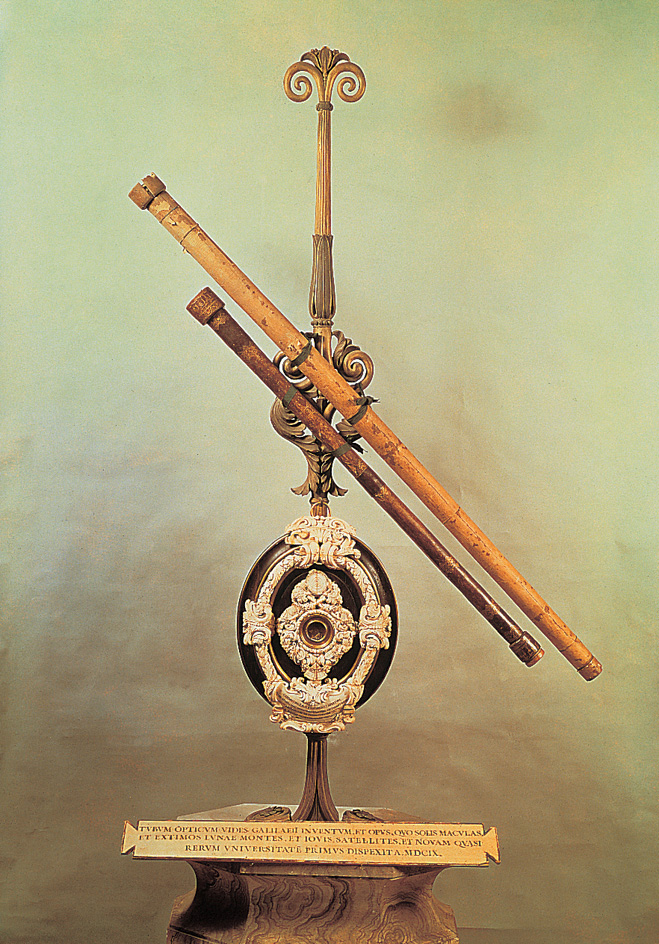
Galileo also saw the need to extend the range and power of the human senses with scientific instruments. He improved such instruments as the clock and telescope. With the telescope, Galileo found convincing evidence supporting Copernicus’ heliocentric theory.
Another remarkable scientist of the 1600’s was Sir Isaac Newton of England. Newton used the findings of others to develop a unified view of the forces of the universe. In his book Principia (1687), he formulated a law of universal gravitation and showed that both objects on Earth and the heavenly bodies obey this law. Newton’s studies of lenses and prisms laid the foundation for the modern study of optics. Newton and Gottfried Wilhelm Leibniz, a German philosopher, independently developed a new system of mathematics, calculus.
The scientific revolution also extended to many other areas of science. Modern physiology began in the early 1600’s with the work of William Harvey, an English physician. Harvey performed careful experiments and used simple mathematics to show how blood circulates through the human body. In the mid-1600’s, an English scientist named Robert Hooke pioneered in the use of the microscope to study the fine structures of plants and animals and uncovered a new world of cells. Also in the mid-1600’s, Robert Boyle, an Irish scientist, helped establish the experimental method in chemistry. Boyle introduced many new ways of identifying the chemical composition of substances.
In addition to scientific discoveries, new ideas about the philosophy and methods of science arose during the 1600’s. The French philosopher Rene Descartes proposed that mathematics was the model all other sciences should follow. He believed mathematics yielded absolutely certain conclusions because the mathematical process started with simple, self-evident truths and then used logic to move, step by step, to other truths.
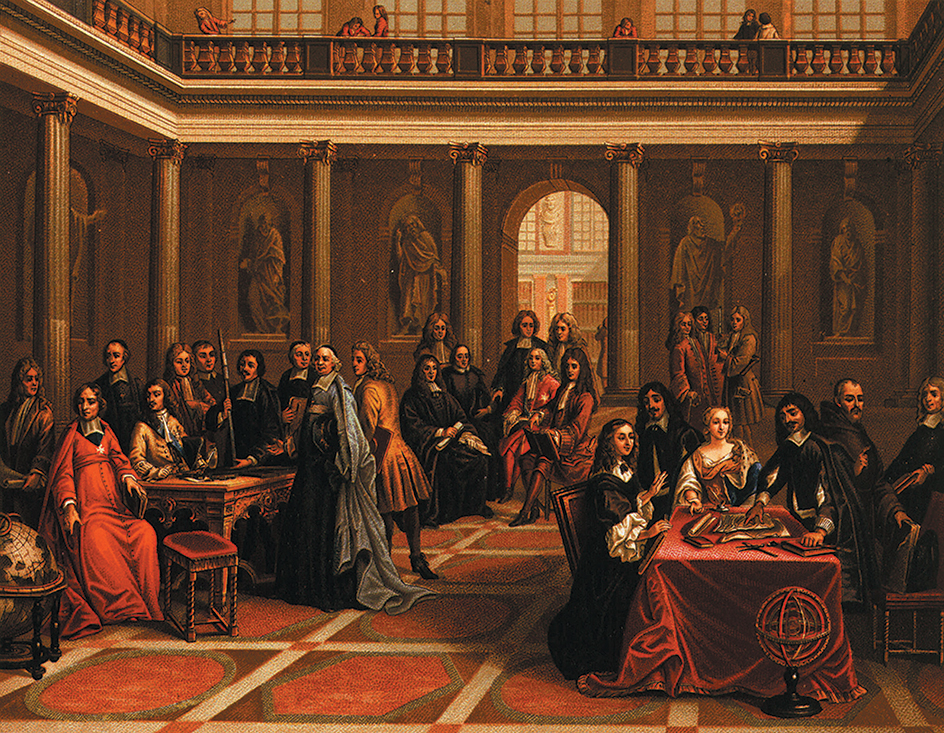
The English philosopher and statesman Francis Bacon viewed experience as the most important source of knowledge. He thought that by collecting all the observable facts of nature, a person could discover the laws which govern the universe. In his book New Atlantis (1627), Bacon described a research institution equipped with many tools of modern science, including laboratories, libraries, and printing presses. Bacon’s ideas inspired the creation of the Royal Society in London in 1660 and of the Academy of Sciences in Paris in 1666. These societies were among the first institutions whose chief aim was to promote science.
Some theologians of the 1600’s supported science because they believed that it helped reveal the wonders of God’s creation. They also felt that scientific discoveries could be used to improve the quality of human life. But many other theologians were deeply upset by the development of scientific laws that seemed to govern the physical world without divine assistance. They opposed the heliocentric theory and condemned other scientific ideas that they believed contradicted traditional beliefs about human beings and their place in the universe.
The Enlightenment,
also called the Age of Reason, was a philosophical movement that greatly affected the development of science during the late 1600’s and the 1700’s. The leaders of the movement insisted that the use of reason was the best way to determine truth. They felt that everything in the universe behaved according to a few simple laws, which could be expressed mathematically. The philosophers of the Enlightenment developed many rules of scientific study that are still used.
Great efforts were made during the Enlightenment to circulate the results of the scientific research of the times. Many scholars gathered, organized, and published this knowledge. The most famous reference work was the 28-volume Encyclopedie (1751-1772) edited by two French authors, Denis Diderot and Jean d’Alembert. The Encyclopedie contained reports on much of the science and technology of the day. See Enlightenment .
One of the major scientific achievements of the 1700’s was the creation of modern chemistry. Scientists developed the techniques necessary for isolating and studying gases in their pure forms. They discovered many chemical substances, including chlorine, hydrogen, and carbon dioxide. Oxygen was discovered by the Swedish chemist Carl Scheele in the early 1770’s and independently by the English chemist Joseph Priestley in 1774. By 1777, Antoine Lavoisier of France had discovered the nature of combustion (burning). He showed that combustion results from the rapid union of the burning material with oxygen. Lavoisier also developed the law of the conservation of matter. This law stated that matter cannot be created or destroyed but only chemically changed in form. Lavoisier also helped work out the present-day system of chemical names.

Major advances occurred in biology during the 1700’s. A Swedish naturalist and botanist named Carolus Linnaeus devised a systematic method for naming and classifying plants and animals in the mid-1700’s. His method, with many alterations, is still used. Two French naturalists, Comte de Buffon and Georges Cuvier, made great advances in the study of fossils and of comparative anatomy and did much to prepare the way for the scientific investigation of evolution.
In 1776, the Scottish economist Adam Smith published The Wealth of Nations, the earliest formulation of classical economics. The first systematic studies of electricity were conducted during the 1700’s. In the American Colonies, Benjamin Franklin proved in 1752 that lightning is electricity. In the late 1700’s, two Italian scientists, Luigi Galvani and Alessandro Volta, made some of the first experiments with electric current.
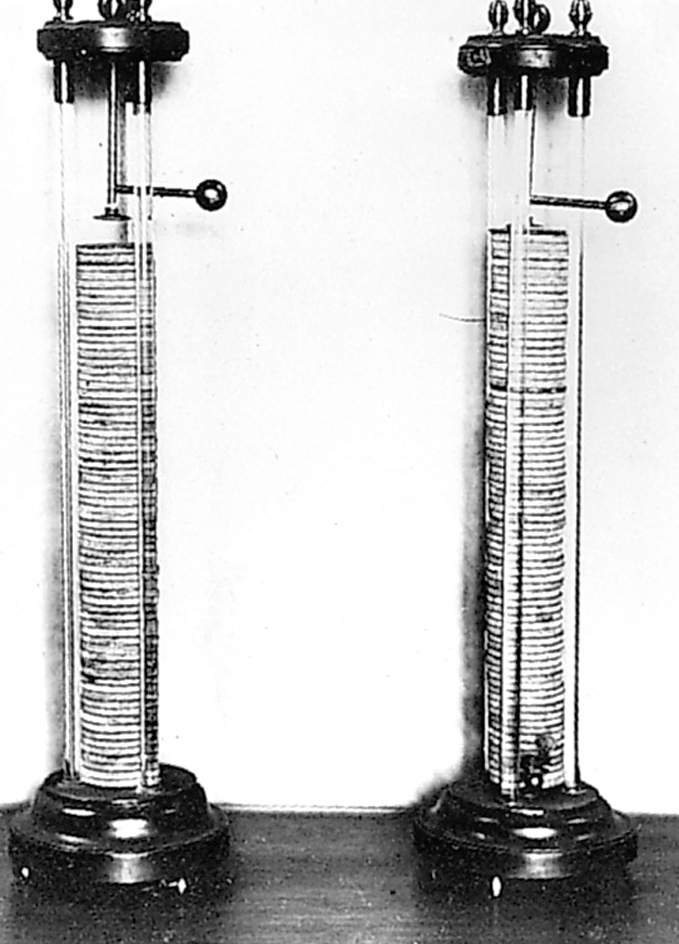
Scientific advances of the 1800’s.
Scientific expeditions traveled to all parts of the world during the 1800’s. Their purpose was to expand geographical knowledge and to study the plants and animals they found. From 1831 to 1836, Charles Darwin worked as a naturalist with a British expedition aboard the H.M.S. Beagle. The Beagle visited places throughout the world, and Darwin studied plants and animals everywhere it went. While on the voyage, Darwin read the works of a British geologist named Charles Lyell. Lyell believed that Earth had been changed slowly and gradually by natural processes over long periods of time. Darwin began to wonder whether life on Earth had also evolved through natural processes.
Darwin set forth his theories of evolution in The Origin of Species (1859). In this book, Darwin gave abundant evidence that plants and animals had changed their characteristics through the ages. He explained how these changes might have occurred through natural selection. In this process, the organisms best suited to their environment are the ones most likely to survive and leave descendants. Darwin’s ideas helped explain the basic similarities—or unity—among all living organisms because they evolved from common ancestors. The theory of evolution became one of the most intensely debated scientific issues of the late 1800’s. The theory aroused especially fiery opposition among religious leaders who believed that it conflicted with the Biblical account of the Creation. See Evolution .
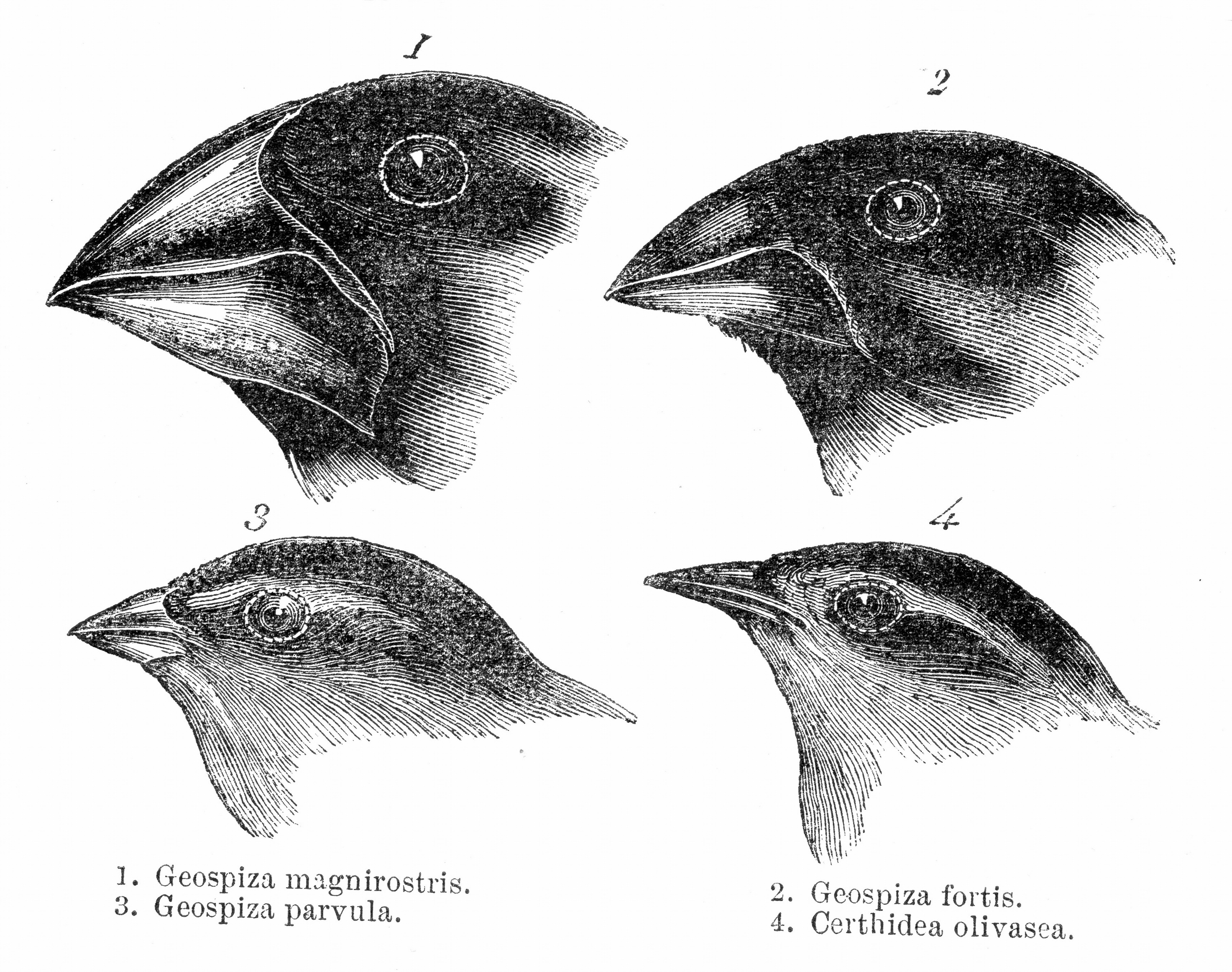
Another important unifying idea in the biological sciences was the theory that all living things are made up of cells. The theory was proposed by two German scientists, Matthias Schleiden and Theodor Schwann, in the 1830’s. Their idea had been influenced by a German philosophical movement called Naturphilosophie. This movement emphasized the unity of all things in nature and of all forces in the universe.
Physical scientists of the 1800’s also tried to produce a unified, complete view of the laws of nature. The Russian chemist Dmitri Mendeleev helped systematize the study of chemistry when he published his periodic table in 1869. In the 1840’s, James P. Joule, an English physicist, showed that heat is a form of energy. He was also one of several scientists to advance the law of the conservation of energy. This law states that energy cannot be created or destroyed but only changed in form.
The physicists Michael Faraday of England and Joseph Henry of the United States found independently in the early 1830’s that a moving magnet can produce an electric current. In the 1860’s, James Clerk Maxwell, a Scottish mathematician and physicist, worked out the mathematical equations for the laws of electricity and magnetism. His electromagnetic theory stated that visible light consists of waves of electric and magnetic forces. It also proposed the existence of invisible waves made of the same forces. In the late 1880’s, Heinrich Hertz, a German physicist, produced electromagnetic waves that fitted Maxwell’s theory. His work led to the development of radio, radar, and television.
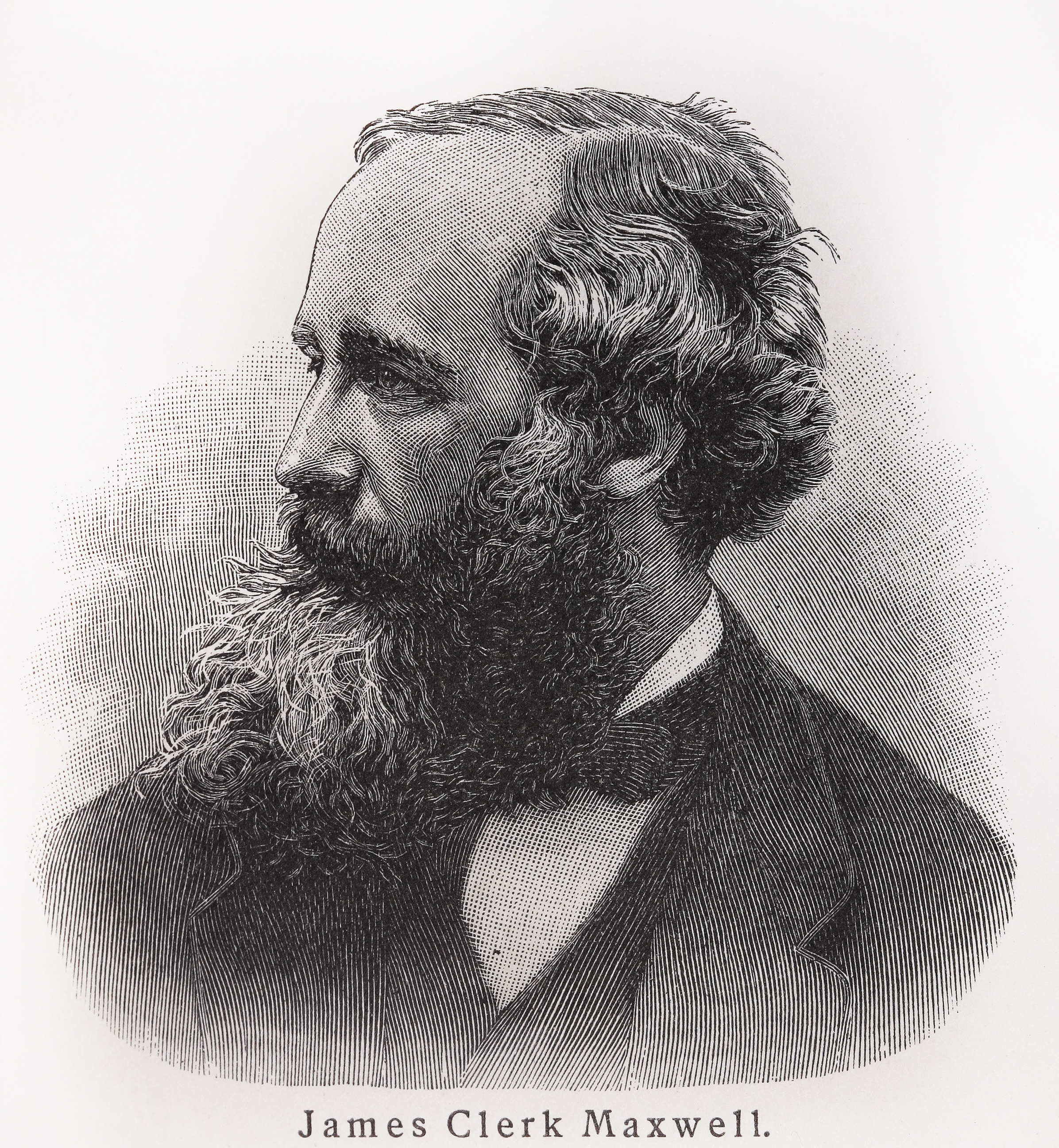
During the late 1800’s, several important scientific discoveries began to reveal a new picture of the physical universe. In the 1700’s, the idea that matter consists of small particles that cannot be divided began to gain acceptance. In 1803, an English chemist named John Dalton had used the idea of indivisible particles, or atoms, to explain the way elements combine and form compounds. But in the 1890’s, the picture of atoms as solid objects began to fade. Scientists discovered electrons and natural radioactivity. These discoveries suggested that atoms have some kind of internal structure.
Several new sciences had their beginnings in the 1800’s. In the 1830’s, the French philosopher Auguste Comte started the study of sociology. Comte developed the theory of positivism, which held that social behavior and events could be observed and measured scientifically. In the mid-1800’s, Gregor Mendel, an Austrian monk, discovered the basic statistical laws of heredity that laid the foundation for the science of genetics. The French chemist Louis Pasteur started modern microbiology in the mid-1800’s with his studies of fermentation and disease. He found that certain microscopic organisms can produce disease in people and other animals.
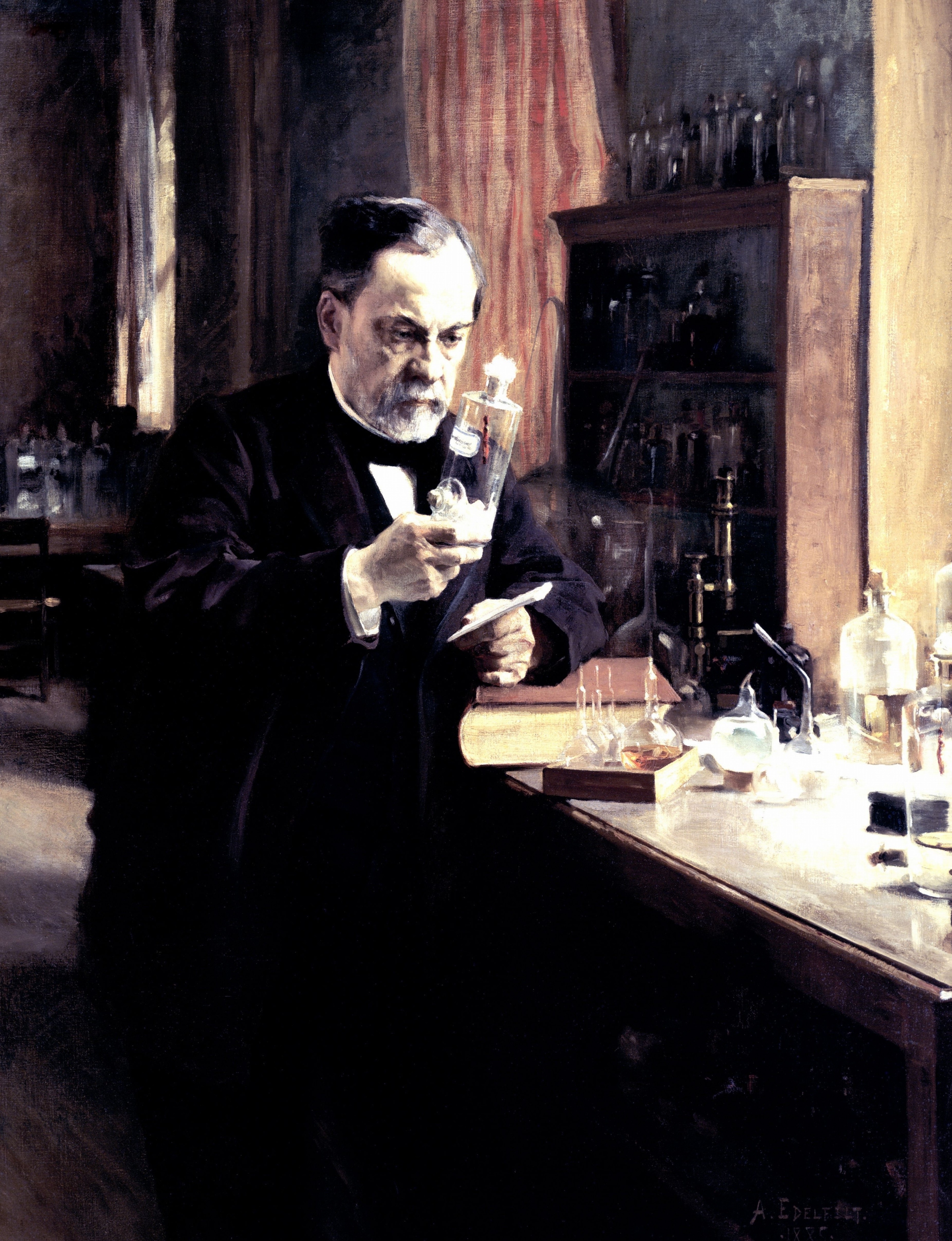
Many scientists of the 1800’s studied the relationship between the physiology of the nervous system and human behavior. In 1879, Wilhelm Wundt, a German philosopher, founded one of the first laboratories of experimental psychology in Leipzig, Germany. In the late 1800’s and early 1900’s, the Austrian physician Sigmund Freud established the field of psychoanalysis by introducing the idea that mental illness could be understood in terms of competing, unbalanced forces in the unconscious mind.
Science in the early 1900’s.
Revolutionary advances in physics marked the beginning of the 1900’s as scientists continued to challenge existing ideas. In 1900, Max Planck, a German physicist, advanced his quantum theory to explain the spectrum of light emitted by certain heated objects (see Quantum mechanics ). The theory states that energy is not given off continuously, but only in separate units called quanta.
In 1905, another German physicist, Albert Einstein, showed that light may be regarded as consisting of individual energy units. He later suggested that these units are particles, now called photons. That same year, Einstein published his special theory of relativity. His theory revised many of the ideas of Newtonian physics and offered scientists new ways of thinking about space and time. See Relativity .
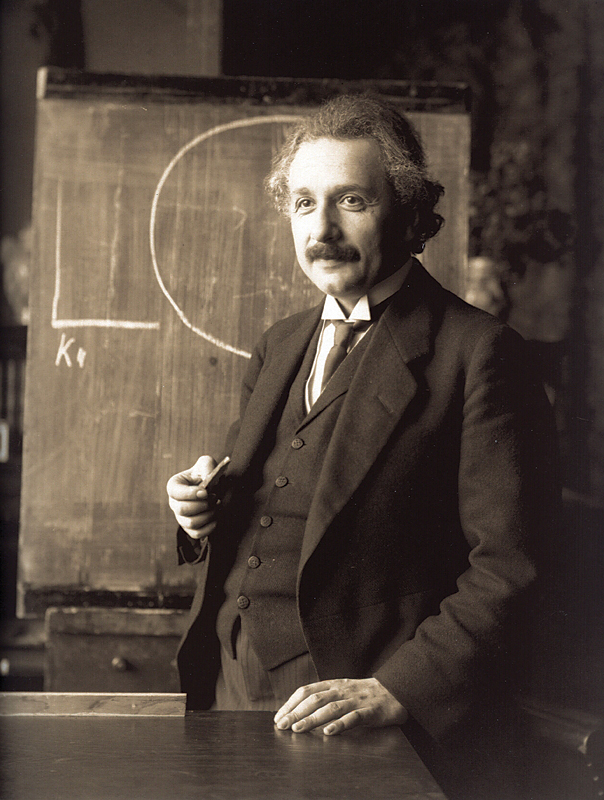
Research into the structure of the atom expanded rapidly. In 1911, the New Zealand-born physicist Ernest Rutherford theorized that the mass of an atom is concentrated in a tiny nucleus, which is surrounded by electrons traveling at tremendous speeds. But his theory did not deal with the arrangement of electrons. In 1913, a description of electron structure was proposed by Niels Bohr, a Danish physicist. Bohr suggested that electrons could travel only in a set of definite orbits around the nucleus.
Bohr’s original picture of the atom soon proved to be inadequate, though many of the ideas behind it were correct. By 1928, a complete description of the arrangement of electrons had been obtained with the help of other physicists, especially Erwin Schrodinger and Wolfgang Pauli of Austria, Paul Dirac of England, and Max Born and Werner Heisenberg of Germany. The discovery of the neutron and other atomic particles followed this early work. Chemists used the new information about atoms to improve their ideas about chemical bonds. They produced many new compounds and developed a variety of plastics and synthetic fibers.
Great progress was also made by social scientists of the early 1900’s, as they began to rely more heavily on statistical analysis and scientific research methods. In the biological sciences, a number of physician-scientists showed the importance of vitamins in the human diet. Their achievements helped conquer such nutritional diseases as beriberi and scurvy. The German physician and chemist Paul Ehrlich founded the field of chemotherapy, in which diseases are treated with chemicals. In 1928, Alexander Fleming, a British bacteriologist, discovered penicillin, the first of many antibiotics.

The work of numerous scientists began to establish the importance of genetics as a separate branch of biology. About 1901, a Dutch scientist named Hugo de Vries extensively described mutations—changes in hereditary material of cells. About 1910, Thomas Hunt Morgan, an American biologist, and his associates proved that genes are the units of heredity and that genes are arranged in an exact order along the length of cell structures called chromosomes. Morgan mapped the location of genes on the chromosomes of fruit flies and identified the genes responsible for such specific traits as eye color and wing shape. In the mid-1920’s, an American geneticist named Hermann J. Muller discovered that mutations could be produced by treating an organism with X rays.
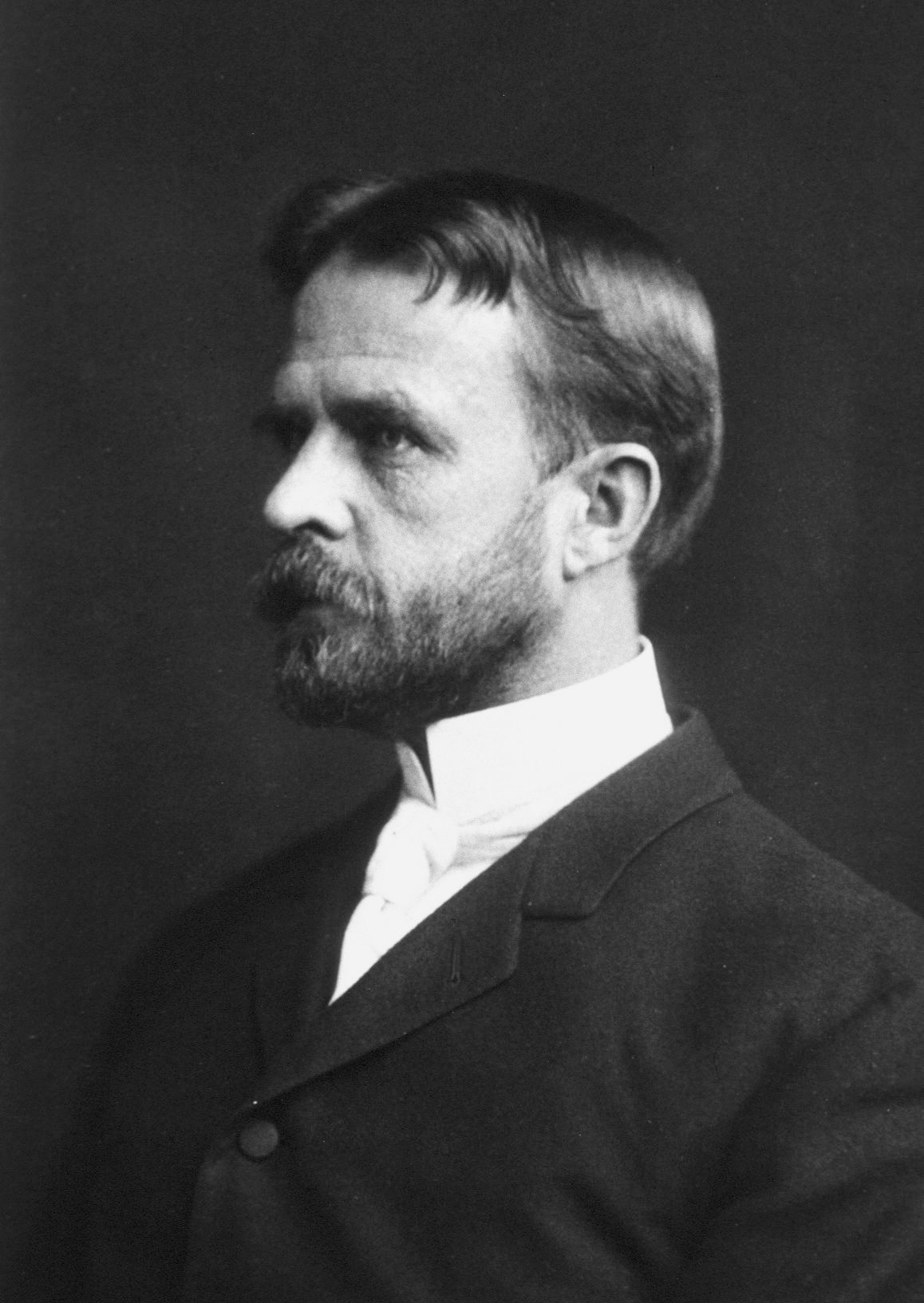
Achievements of the mid-1900’s.
Science continued to make great strides in all fields during the mid-1900’s. One of the most important breakthroughs in nuclear physics occurred in the late 1930’s, when Otto Hahn and Fritz Strassmann of Germany and Lise Meitner and Otto Frisch of Austria discovered the possibility of releasing energy by splitting atoms of uranium. The Italian-born physicist Enrico Fermi and his co-workers achieved the first controlled nuclear chain reaction in 1942 at the University of Chicago. Intensive research during World War II (1939-1945) led to the use of nuclear energy in weapons.
Physicists discovered new elementary particles in the mid-1900’s. They also established the existence of antiparticles, which have electric charges or other properties that are the reverse of ordinary atomic particles (see Antimatter ). Chemists expanded the periodic table through the creation of new radioactive elements (see Transuranium element ). Anthropologists made new discoveries about the distant past of human beings. Geologists explained many of the changes that occur in Earth’s crust with their theory of plate tectonics (see Plate tectonics ). Medical science developed the Salk and Sabin polio vaccines and introduced organ and tissue transplants and other new surgical techniques. Two biologists, James D. Watson of the United States and Francis H. C. Crick of the United Kingdom, proposed a model of the molecular structure of deoxyribonucleic acid (DNA), the substance that carries genetic information.
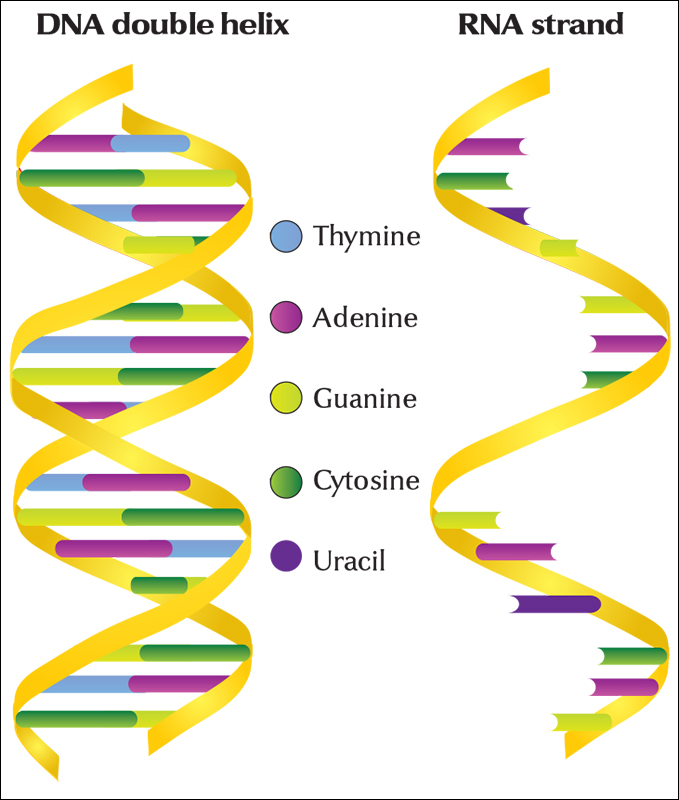
The space age began in 1957, when the Soviet Union launched the first artificial satellite to circle Earth. In 1969, two U.S. astronauts became the first human beings to walk on the moon (see Space exploration ). Astronomers also greatly expanded their knowledge of the size, structure, and history of the universe with the use of radio telescopes to collect and measure radio waves given off by objects in space. Using radio telescopes, astronomers discovered pulsars, quasars, and other previously unknown objects in space (see Pulsar ; Quasar ). Radio astronomers also found evidence to support the theory that the universe began with an explosion called the big bang (see Cosmology (Microwave radiation) ).
Science also made important contributions to technology during the mid-1900’s. Physicists invented the transistor, which revolutionized the electronics industry and enabled manufacturers to produce portable battery-powered radios and TV sets, pocket-sized calculators, and high-speed computers. Similarly, the invention of lasers promised great advances in communications, electronics, and medicine (see Laser ).
Recent developments.
In the late 1900’s, science began to advance more rapidly than ever before. This progress was reflected not only by the many discoveries made each year but also by the thousands of scientists involved in research and by the vast sums of money spent on scientific work. As the number of scientists grew, cooperation and communication among them became increasingly important. Many achievements resulted from scientists working in research teams. Hundreds of scientific journals, professional societies, and computerized information systems made it possible for scientists to exchange information quickly and easily.
Increasingly powerful and advanced equipment helped scientists in many different fields. For example, improvements in computers enabled mathematicians to solve problems at previously unheard of speeds. Computer simulations helped scientists perform experiments and test their theories. Particle accelerators, which speed up the movement of the particles that make up atoms, enabled physicists to create and study quarks and other basic units of matter (see Particle accelerator ; Quark ). Magnetic resonance imaging (MRI) and other advanced techniques produced images of tissues inside the body and helped identify certain diseases and injuries (see Magnetic resonance imaging ). New telescopes, satellites, orbiting observatories, and space probes provided astronomers with information about distant reaches of the universe.
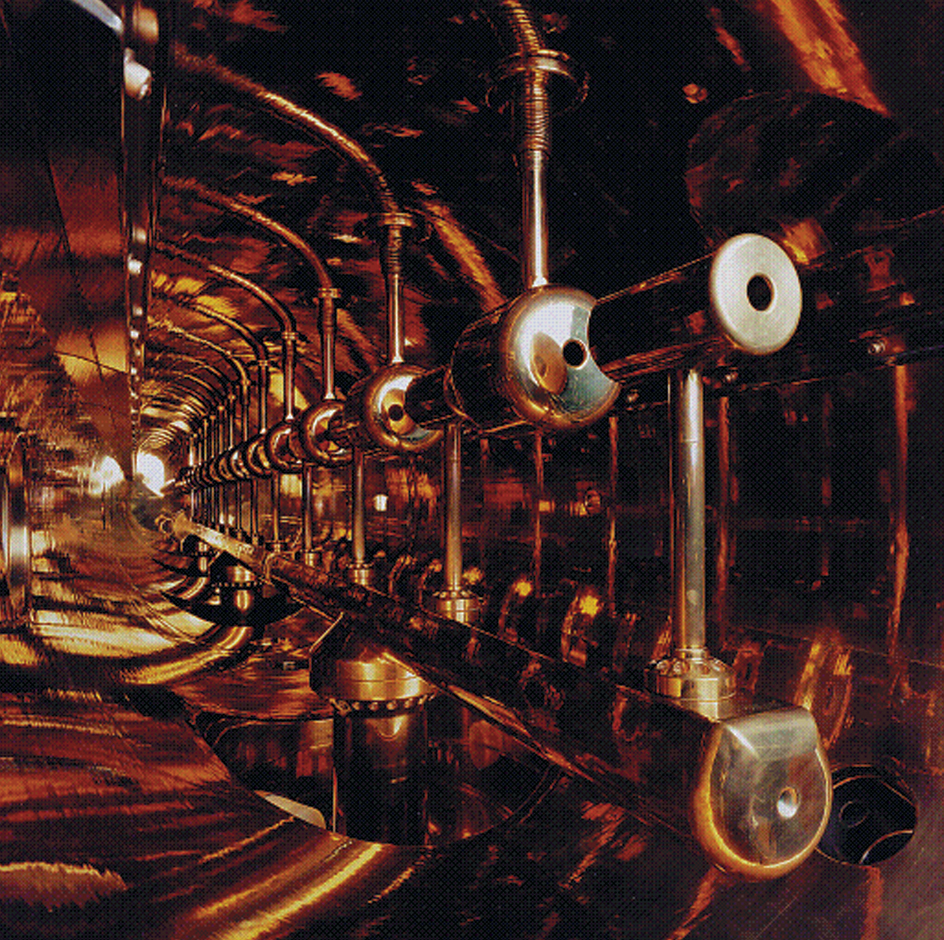
A process called genetic engineering became a valuable tool in genetics research. In this process, an organism’s hereditary makeup is altered. Geneticists have engineered bacteria to produce human insulin, a hormone that is used in the treatment of diabetes. See Genetic engineering .
In 2000, scientists announced that they had analyzed essentially all the chemical instructions, encoded in DNA, that control heredity in human beings. One complete set of those instructions is called a genome << JEE nohm >> . See Human Genome Project .
The science of today and tomorrow promises to continue to improve our understanding of the universe and to give us ever greater control over nature. But at the same time, serious debates have arisen over such science-related issues as whether it is moral to interfere in the genetic makeup of human beings or to use lasers for destructive purposes. In the future, scientists and nonscientists alike will have an increasing responsibility to ensure that the best possible uses are made of knowledge from scientific research.
